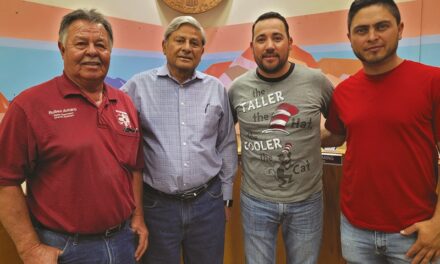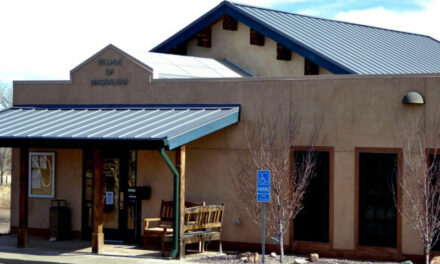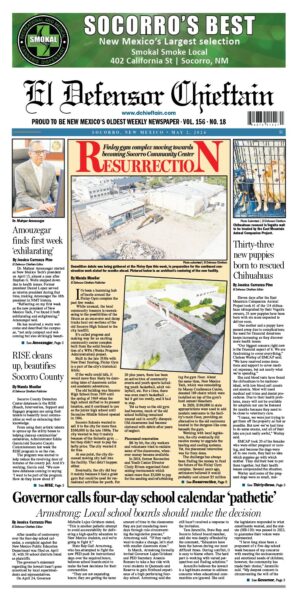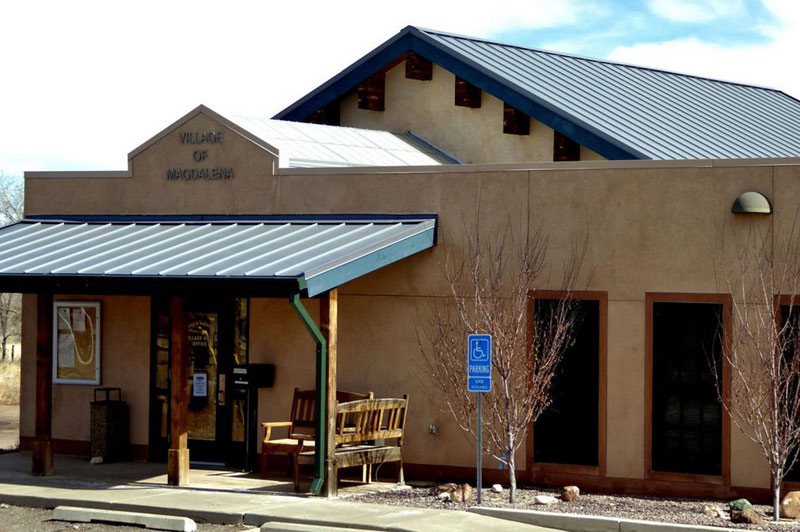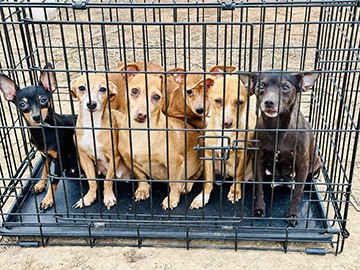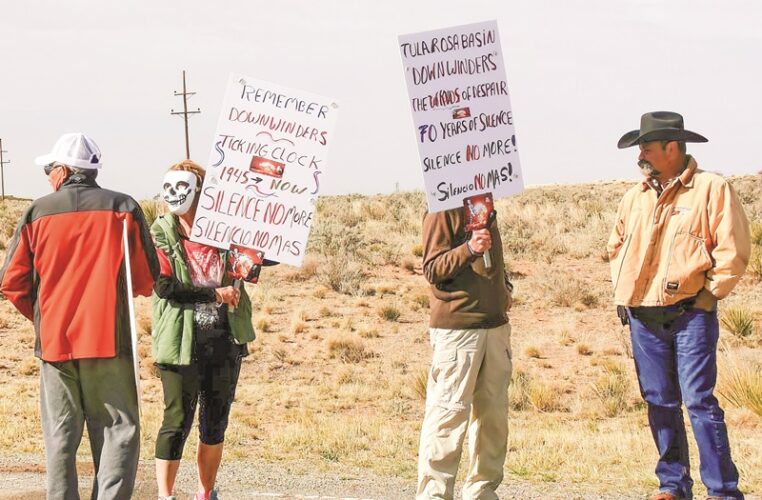
Members of the Tularosa Basin Downwinders Consortium hold a peaceful demonstration at WSMR Stallion Gate.
John Larson | El Defensor Chiefftain
For the last few years, the citizen’s group known as the Tularosa Basin Downwinders Consortium has been lobbying for a change to a bill in Congress that would allow more individuals affected by radioactive fallout to receive medical coverage. Its efforts are finally seeing progress with the passage of an amendment to the Radiation Exposure Compensation Act (RECA) in the United States Senate.
The original bill, passed in 1990, awarded financial reparations to Nevada Test Site Downwinders, on-site test participants during atmospheric nuclear weapons tests, and uranium miners and millers who worked before 1971 and who developed cancer and other specific illnesses as a result of radioactive fallout or radon gasses to which they were exposed.
However, people in communities and regions surrounding the Trinity Test in southeastern Socorro County were not included in the original Act or subsequent amendments.
“The people of New Mexico have never been included in the Radiation Exposure Compensation Act, although we were the first people exposed to radiation anyplace in the world as a result of an atomic bomb,” said Tina Cordova, co-founder of the Tularosa Bason Downwinders Consortium. “We’ve been suffering ever since, and people have been dying ever since.”
Provisions of the amendment would extend health care coverage and compensation to those exposed to radiation during weapons testing in several new regions, including the Trinity Site.
“Firstly, I think we need to realize that Tularosa Basin Downwinders Consortium is a name that references the location of the test–the Tularosa Basin–but we are representing the interests of everyone in the state of New Mexico and the Radiation Exposure Compensation Act amendments could deliver assistance to everybody in the state.”
In other words, “Everybody in New Mexico is a downwinder,” she said.
Cordova said that soil samples from the Trinity Test site have shown a unique signature that allows researchers to trace fallout back to the bomb.
“There’s a recent mapping fallout deposition mapping that was released by a scientist, Sébastien Philippe of Princeton University, and in that mapping, he has concluded that over the first ten days after Trinity the entire state of New Mexico received significant levels of deposition,” she said. “And also impacted 46 states, as well as Mexico.”
Montoya asserts that since the Trinity blast, New Mexicans have been plagued with illnesses and cancers due to their over-exposure to radiation “on the soil, in the water, in the air, on the plants, and the skin of every living thing, both human and animal,” Cordova said in an interview with the Chieftain. “The communities that have been impacted the most are rural, and many people can’t afford to pay for the treatments, medications, surgeries, co-pays, hotel stays, gas, and other costs that are involved in treating illness and cancer.
“The US government has for years said to the people of New Mexico and everybody else concerned that the fallout cloud from Trinity drifted off in a northeasterly direction, in a very orderly fashion, over the most unpopulated parts of our state, over five counties essentially,” she said. “And we have said repeatedly that we know that that is actually not true. And why do we know that? Because we recorded oral histories from people who were alive at the time and who experienced the fallout for days afterward.”
According to estimates in the study, the fallout may have reached as far away as Ontario, Canada, as early as four days after the bomb’s detonation in New Mexico.
“But what came through is that Socorro County was the fifth-highest county in the country for overall fallout deposited from above-ground testing,” she said. “These are significant findings and the reason the people of New Mexico must be added to the Radiation Exposure Compensation Act. You know, 78 years is a long time to wait, and we’ve lost lots of people.”
Efforts to expand the program go back several years, but now advocates say there is broader interest since more people would stand to lose access to compensation funds without the amendment to RECA, which now goes to the US House of Representatives for approval.
If it does pass in the House, President Joe Biden said that he supports expanding RECA during his visit to Albuquerque last month.
Cordova encouraged people to reach out to members of the House of Representatives, especially Republicans, including House Speaker Kevin McCarthy, and urge them to support the expansion of RECA.
“I’ve been working on this for 18 years, and for 13 of those years, we’ve had bills introduced in Congress, and we’ve never received a floor vote,” Montoya said. “Senators Ben Ray Lujan, Mike Crapo of Idaho and Josh Hawley of Missouri were able to work in a bipartisan fashion to pass this nonpartisan bill , and so, what took place on July 27 was historical and monumental. A truly bipartisan effort, delivering 61 votes in the US Senate, it never happens these days.”
The vote was 61 to 37.
“There’s nothing partisan about our over-exposure to radiation in the American West,” she said.

